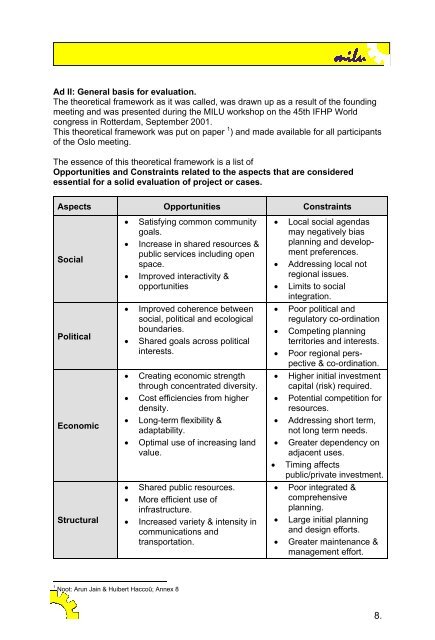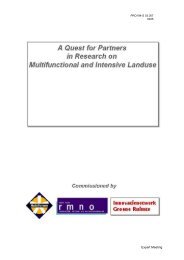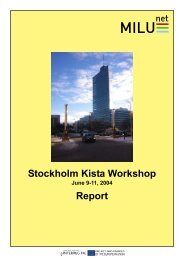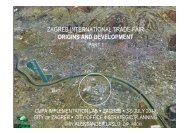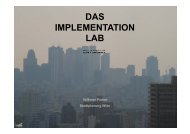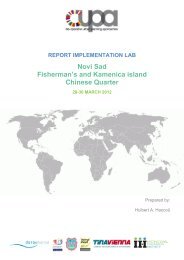2001-June 6-8 MILU - Iiinstitute.nl
2001-June 6-8 MILU - Iiinstitute.nl
2001-June 6-8 MILU - Iiinstitute.nl
You also want an ePaper? Increase the reach of your titles
YUMPU automatically turns print PDFs into web optimized ePapers that Google loves.
Ad II: General basis for evaluation.<br />
The theoretical framework as it was called, was drawn up as a result of the founding<br />
meeting and was presented during the <strong>MILU</strong> workshop on the 45th IFHP World<br />
congress in Rotterdam, September <strong>2001</strong>.<br />
This theoretical framework was put on paper 1 ) and made available for all participants<br />
of the Oslo meeting.<br />
The essence of this theoretical framework is a list of<br />
Opportunities and Constraints related to the aspects that are considered<br />
essential for a solid evaluation of project or cases.<br />
Aspects Opportunities Constraints<br />
Social<br />
Political<br />
Economic<br />
Structural<br />
• Satisfying common community<br />
goals.<br />
• Increase in shared resources &<br />
public services including open<br />
space.<br />
• Improved interactivity &<br />
opportunities<br />
• Improved coherence between<br />
social, political and ecological<br />
boundaries.<br />
• Shared goals across political<br />
interests.<br />
• Creating economic strength<br />
through concentrated diversity.<br />
• Cost efficiencies from higher<br />
density.<br />
• Long-term flexibility &<br />
adaptability.<br />
• Optimal use of increasing land<br />
value.<br />
• Shared public resources.<br />
• More efficient use of<br />
infrastructure.<br />
• Increased variety & intensity in<br />
communications and<br />
transportation.<br />
• Local social agendas<br />
may negatively bias<br />
planning and development<br />
preferences.<br />
• Addressing local not<br />
regional issues.<br />
• Limits to social<br />
integration.<br />
• Poor political and<br />
regulatory co-ordination<br />
• Competing planning<br />
territories and interests.<br />
• Poor regional perspective<br />
& co-ordination.<br />
• Higher initial investment<br />
capital (risk) required.<br />
• Potential competition for<br />
resources.<br />
• Addressing short term,<br />
not long term needs.<br />
• Greater dependency on<br />
adjacent uses.<br />
• Timing affects<br />
public/private investment.<br />
• Poor integrated &<br />
comprehensive<br />
planning.<br />
• Large initial planning<br />
and design efforts.<br />
• Greater maintenance &<br />
management effort.<br />
1<br />
Noot: Arun Jain & Huibert Haccoû; Annex 8<br />
8.


